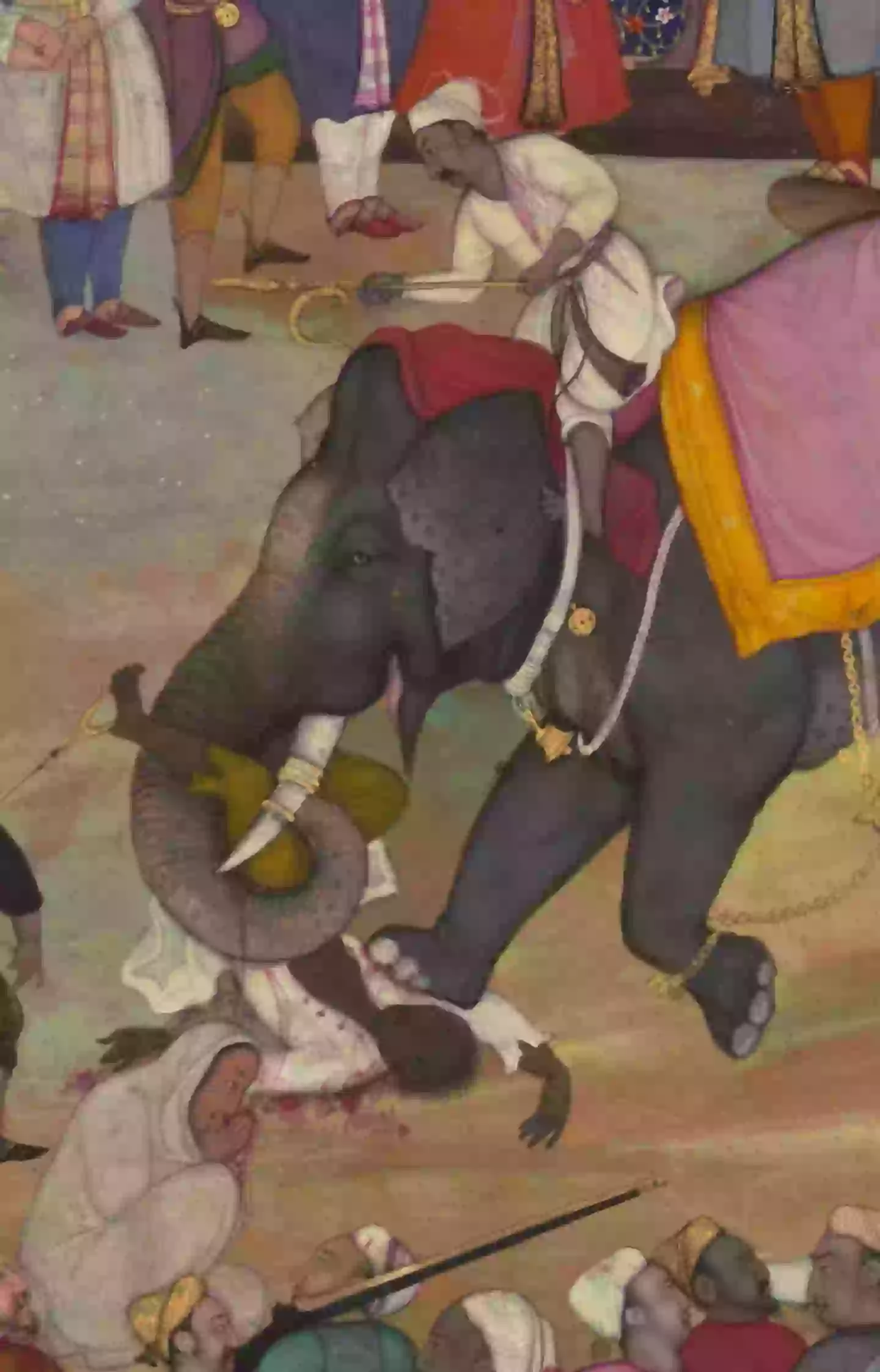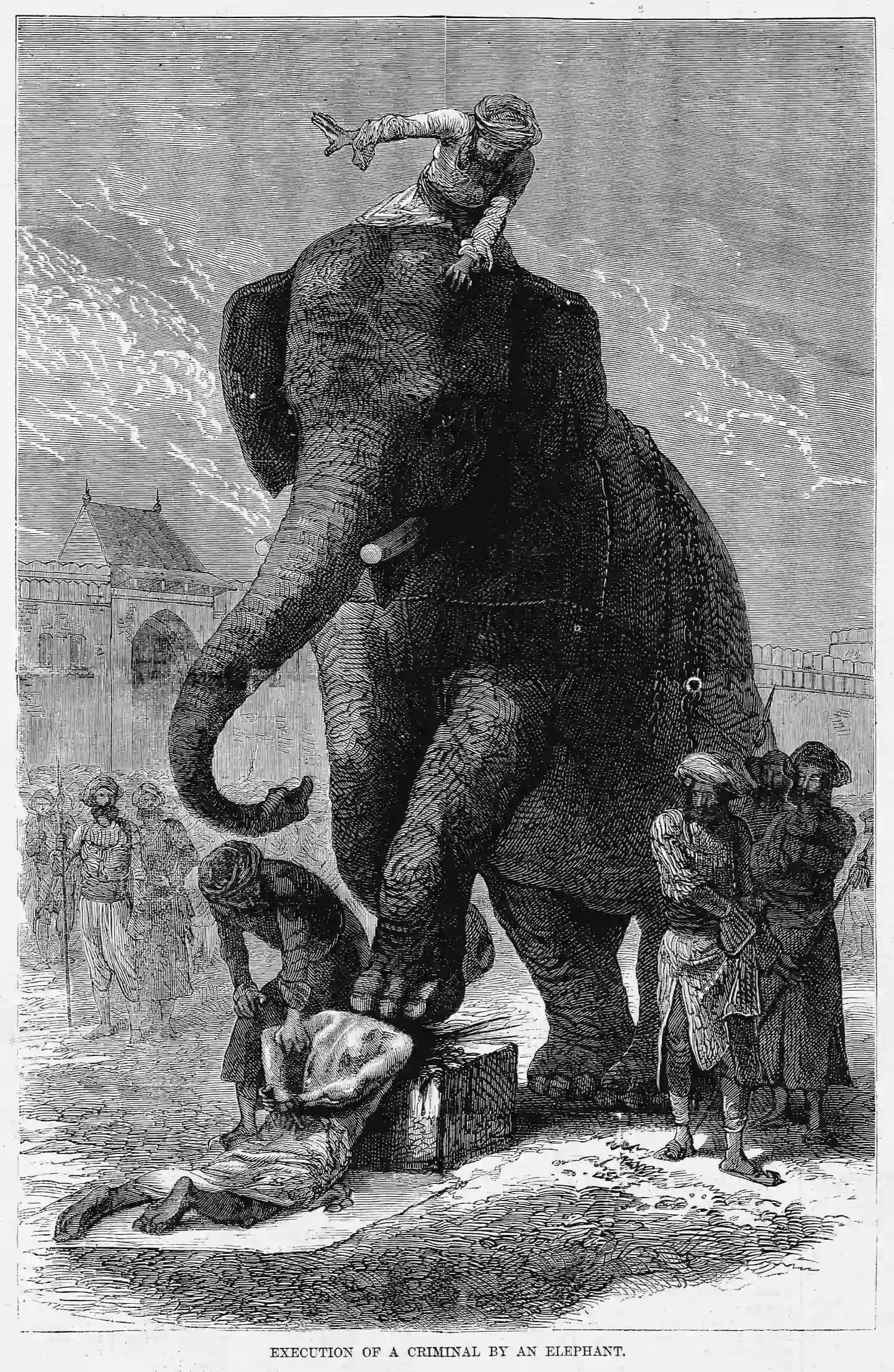“Unveiling History’s Gruesome Secret: How One Elephant’s Role Made Execution Infamous”
Have you ever wondered how people met their end in ancient times? Well, strap in, because it turns out one particularly gruesome method was being executed by an elephant! Yeah, you heard that right. Imagine being at the mercy of an enormous creature, trained not just to guide tourists but also to serve the grim role of executioner. “They say elephants never forget,” and trust me, those executioners remembered every agonizing technique they’d been taught. History paints a chilling picture of how these majestic beasts were utilized in various regions—from India to ancient Greece—leaving behind an unsettling legacy. Scottish sailor Alexander Hamilton, in his 1727 travelogue, recounts the horrifying process of this execution style in what is now Thailand. Let’s dive deeper into this bizarre slice of history, where an elephant’s might meant someone’s life—and sometimes, an agonizing death. LEARN MORE
In yet more compelling evidence that living in pretty much any other time period than now would absolutely suck, one of the ways some people were put to death was being executed by an elephant.
They say elephants never forget, which means the enormous executioner would remember every method of pain and death it has been taught to inflict.
Elephants trained to execute people could be taught to slowly crush and gore a condemned soul to death, or be made to get it over and done with quickly.
It was carried out in various parts of the world including India and Southeast Asia, though there are examples recorded in the Ancient Greek and Roman worlds too.
Scottish Sailor Alexander Hamilton (not the guy the musical is about) wrote an account of an execution by elephant carried out in what was then Siam, now Thailand, in his 1727 book A New Account of the East Indies.

An artistic depiction of execution by elephant from the Akbarnama, a chronicle of the reign of Mughal Emperor Akbar the Great (Public Domain)
“For Treason and Murder, the Elephant is the Executioner,” he wrote, as he went on to describe how a man was crushed to death by an elephant.
“The condemned Person is made fast to a Stake driven into the Ground for the Purpose, and the Elephant is brought to view him, and goes twice or thrice round him.
“And when the Elephant’s Keeper speaks to the monstrous Executioner, he twines his Trunk round the Person and Stake, and pulling the Stake from the Ground with great Violence, tosses the Man and the Stake into the Air, and in coming down, receives him on his Teeth, and making him off again, puts one of his fore Feet on the Carcase, and squeezes it flat.”
That all sounds thoroughly unpleasant to endure.
In the same book the sailor wrote of how in the Mughal Empire which ruled most of India at the time a man who had offended 17th Century Mughal ruler Shah Jahan was sent ‘to the Elephant Garden, and there to be executed by an Elephant, which is reckoned to be a shameful and terrible Death’.
Historical accounts from Ancient Greece and Rome also mention a couple of famous figures using execution by elephant on their enemies to make an example.
There are many other existing accounts of execution by elephant which note how versatile a way it was to put someone to death.
Elephants could kill someone quickly by crushing their head or crush various body parts slowly, while the animals could also have accessories attached to them in order to inflict even more pain.

If it was quick they’d stamp on your head, it wasn’t always quick (CORBIS/Corbis via Getty Images)
Blades and spikes could be fitted to the elephant’s tusks to increase the number of ways someone sentenced to death by elephant could be killed by the animal.
In some cases an elephant would be used more as an implement of torture than death, as they were sometimes trained to roll their victims around on the ground but not kill them.
Some people who had an elephant set upon them could be pardoned and find themselves badly beaten and fearing for their lives but ultimately let go.
Thankfully, as a means of punishment it has long since fallen out of favour.




















